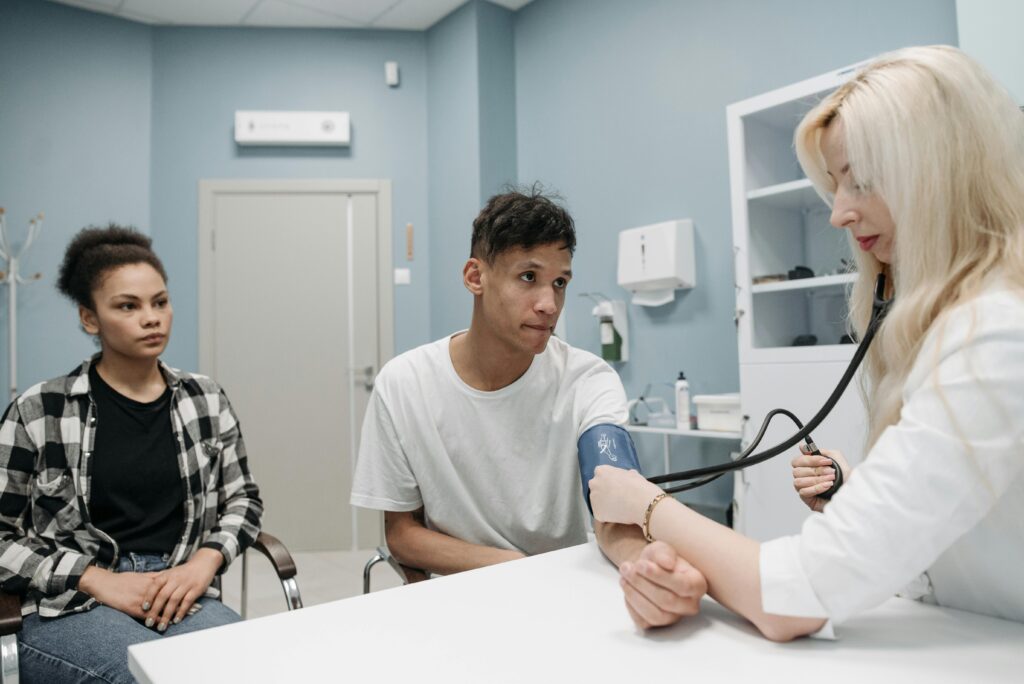Dear friends,
I first met Paul Farmer in 1998 at a symposium hosted by Partners In Health, where I was an intern. We stayed in touch over the years. He was always willing to share his wit, wisdom, and encouragement. I later asked him to write a brief foreword for my book. He replied, in classic Paul fashion, with 5,000 words. “I put my heart in it, Rishi!” he said.
Paul put his heart in everyone he knew, from the patients he comforted to the caregivers and advocates he inspired. With his own humanity, he compelled us to recognize the humanity in everyone — and then to challenge the social injustices and structural violence that value some lives less than others.
As I mourn his death and appreciate his life in fellowship with countless others, two lessons resonate deeply with me.
First, he helped make clear why it’s important for clinical medicine and public health to understand and help counteract structural violence.
A few months after we first met, Paul and I had dinner at a Malaysian restaurant close to Boston’s Symphony Hall. (In his whirlwind life, he somehow made time for countless mentees, trainees, and students.) I was a first-year medical student who had studied biology, religion, and peace & justice studies in college and had just returned to the U.S. after a year in India working on community health and participatory democracy. Talking with Paul was a joy; he was a brilliant interdisciplinary scholar of social medicine and anthropology, studied liberation theology, and of course knew the seminal work of people I admired and studied — peace scholars like Johan Galtung (who introduced the term structural violence in 1969), social medicine pioneers like Jack Geiger, and philosophers like Amartya Sen.
He shared some of his thoughts about structural violence that evening, previewing what he would later describe in writing with his signature moral clarity.
Sure, bad things happen. But they don’t often happen randomly. Violence is done to some people in this world by poverty, racism, gender inequality, homophobia, and xenophobia. Just as this violence, which [Gustavo] Gutiérrez and others term structural violence or “structural sin,” can be institutionalized through unjust social arrangements, so too can it be undone with the help of more just ones.
Paul would also go on to write about ways clinical medicine and public health practitioners could help undo these institutionalized forms of structural violence by working at multiple levels, from “distal” interventions for patients who are already sick to “proximal” interventions in people’s everyday environments to prevent illness before it occurs.
We talked about the need for this multi-level upstream approach in medicine and public health that evening in Boston. Over the years, we communicated about the real challenges in implementing that approach. And, when we launched HealthBegins ten years ago, Paul’s words of support let us know we were on the right path.
Our world badly needs more upstreamists, especially those who do not ignore the need to innovate in system design and to incorporate new technologies into an equity agenda.
Not surprisingly, this upstream multi-level approach is at the heart of our work at HealthBegins, where we help health professionals work across these levels to address the social and structural drivers of health inequity impacting patients and communities. We’re not alone. Paul’s clear understanding of structural violence — of how it harms the people we love and care for (including our patients), and why it’s so important for health professionals to help counteract this violence — has inspired vanguard organizations across the world.
I’ve been reflecting on another lesson from Paul’s life: advancing health equity and counteracting structural violence requires humanity and courage.
I didn’t fully appreciate this lesson when I first met Paul. In fact, at that dinner, I was also unsure. Was it truly possible to forge a clinical and public health career that would enable me to understand structural violence, let alone learn how to counteract it? Was it possible to be a compassionate and skilled caregiver for patients whose human rights are often denied, and also be an effective advocate to demand that those rights be protected?
Paul, of course, was sure. Not only because he had thought deeply and written volumes about these questions, but because he had already fashioned his life’s work to be his answer. “I’m reading your oeuvre,” the journalist Tracy Kidder once wrote to him, referring to his published papers. “Ah, but that is not my oeuvre,” Paul replied. “To see my oeuvre, you have to come to Haiti.”
Paul Farmer cared for the poor, but he eschewed charity. He focused instead on compelling those with privilege to challenge unjust structures that made and kept his patients sick; and compelling those with resources and power to finance the staff, space, stuff, and systems needed to keep his patients well. He consistently refused to let conventional, privileged notions of what’s possible (or not possible) get in the way of addressing deeply-rooted inequities and getting care to those who needed it most. That same spirit lives on in Partners in Health and in many other people and organizations that he helped nurture and support over the years.
This all took courage. And that type of courage doesn’t stem from those in power. It comes from working in solidarity with and providing redress to those often harmed by power — people living in poverty and with sickness, people who are probably not reading the journals and trade publications that espouse health equity these days but who know what the “sharp end of the stick” of structural violence feels like. These individuals were always Paul’s main concern. And through his words and deeds, he often compelled us, especially those of us in health care, to make them our concern too.
In the foreword to my book, Paul wrote: “Understanding more about the causes of the causes will help make medicine matter, help make it better, in part because it forces us to be better listeners.” To him, the value of moving upstream and advancing equity wasn’t (and shouldn’t be) defined by narrow ROI calculations. We move upstream and advance equity because it’s a higher standard of care. To underscore that point, he quoted a verse from Bertolt Brecht’s “A Worker’s Speech to a Doctor,” one which reads as a call to action for every practitioner of medicine:
When we come to you
Our rags are torn off us
And you listen all over our naked body.
As to the cause of our illness
One glance at our rags would
Tell you more. It is the same cause that wears out
Our bodies and our clothes.
The pain in our shoulder comes
You say, from the damp; and this is also the reason
For the stain on the wall of our flat.
So tell us:
Where does the damp come from?
Through the example of his own humanity and courage, Paul showed many of us a path to follow. In a moving tribute, my friend Sriram Shamasunder, co-founder of the HEAL Initiative (another organization Paul supported and mentored), recounted how Paul conveyed “the irresistibility of social medicine, where health workers aim to address the root causes of disease in its social and economic context. This work is where necessity, urgency and joy become bound together.”
Necessary, urgent, joyful. It was the nature of Paul’s work, just as it is for us and others he inspired. I’m forever grateful to have known him, and I’m deeply sad that he’s gone. But I’m buoyed by the light Paul Farmer sparked in so many people around the world. May his moral clarity, courage, and generous spirit live on in each of us.
With gratitude,

Rishi Manchanda, MD, MPH.
Featured content
Providing Health Equity for Immigrants in a Time of Crisis
This moment presents an opportunity for healthcare leaders to harness the national attention focused on immigrant care to build investments, policies, and protections to improve care for these communities long-term.
HealthBegins Brief: Addressing Climate Health Inequities With The Community Health Needs Assessment
This HealthBegins Policy and Practice Brief invites every healthcare organization to immediately begin addressing the impact of climate change on health at the community level and with community participation.
Immigration Enforcement in Healthcare Settings: How to Prepare and Respond
Many of our healthcare partners are asking how they should prepare for potential ICE encounters on their premises and respond in the interim to concerns among patients and staff. These questions, answers, and resources provide some guidance.



